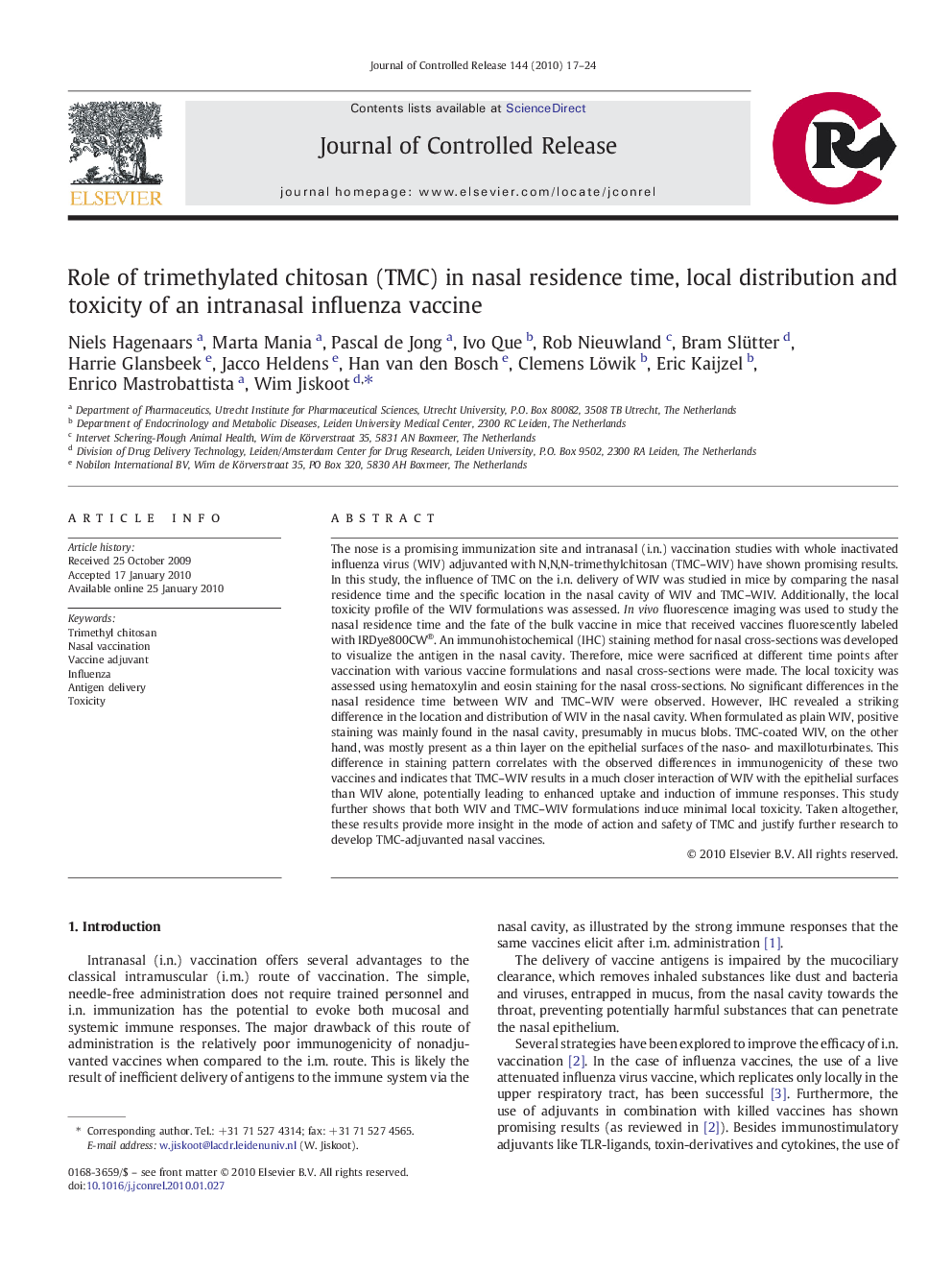| کد مقاله | کد نشریه | سال انتشار | مقاله انگلیسی | نسخه تمام متن |
|---|---|---|---|---|
| 1425561 | 986770 | 2010 | 8 صفحه PDF | دانلود رایگان |

The nose is a promising immunization site and intranasal (i.n.) vaccination studies with whole inactivated influenza virus (WIV) adjuvanted with N,N,N-trimethylchitosan (TMC–WIV) have shown promising results. In this study, the influence of TMC on the i.n. delivery of WIV was studied in mice by comparing the nasal residence time and the specific location in the nasal cavity of WIV and TMC–WIV. Additionally, the local toxicity profile of the WIV formulations was assessed. In vivo fluorescence imaging was used to study the nasal residence time and the fate of the bulk vaccine in mice that received vaccines fluorescently labeled with IRDye800CW®. An immunohistochemical (IHC) staining method for nasal cross-sections was developed to visualize the antigen in the nasal cavity. Therefore, mice were sacrificed at different time points after vaccination with various vaccine formulations and nasal cross-sections were made. The local toxicity was assessed using hematoxylin and eosin staining for the nasal cross-sections. No significant differences in the nasal residence time between WIV and TMC–WIV were observed. However, IHC revealed a striking difference in the location and distribution of WIV in the nasal cavity. When formulated as plain WIV, positive staining was mainly found in the nasal cavity, presumably in mucus blobs. TMC-coated WIV, on the other hand, was mostly present as a thin layer on the epithelial surfaces of the naso- and maxilloturbinates. This difference in staining pattern correlates with the observed differences in immunogenicity of these two vaccines and indicates that TMC–WIV results in a much closer interaction of WIV with the epithelial surfaces than WIV alone, potentially leading to enhanced uptake and induction of immune responses. This study further shows that both WIV and TMC–WIV formulations induce minimal local toxicity. Taken altogether, these results provide more insight in the mode of action and safety of TMC and justify further research to develop TMC-adjuvanted nasal vaccines.
In vivo fluorescence imaging (left) and local antigen distribution (right) of an intranasal influenza vaccine formulated with trimethylated chitosan (TMC).Figure optionsDownload as PowerPoint slide
Journal: Journal of Controlled Release - Volume 144, Issue 1, 21 May 2010, Pages 17–24